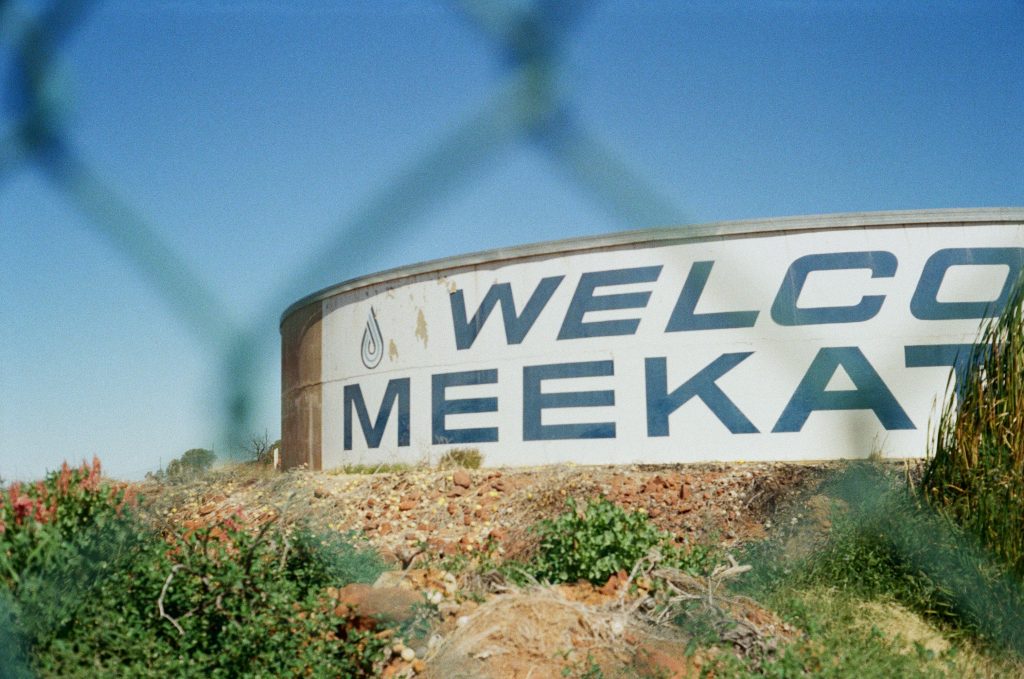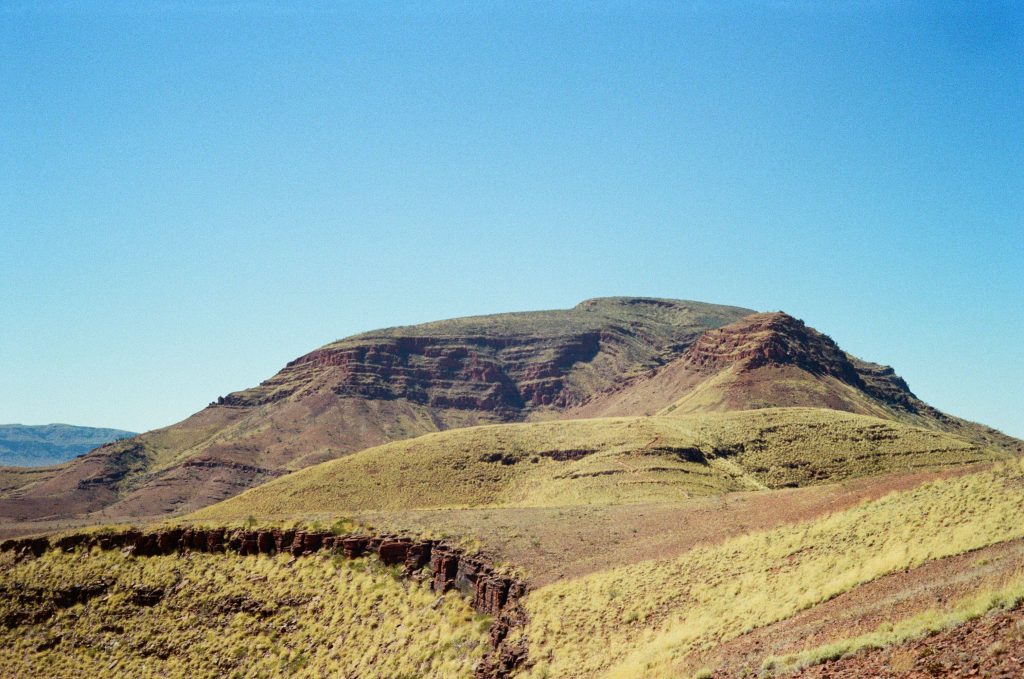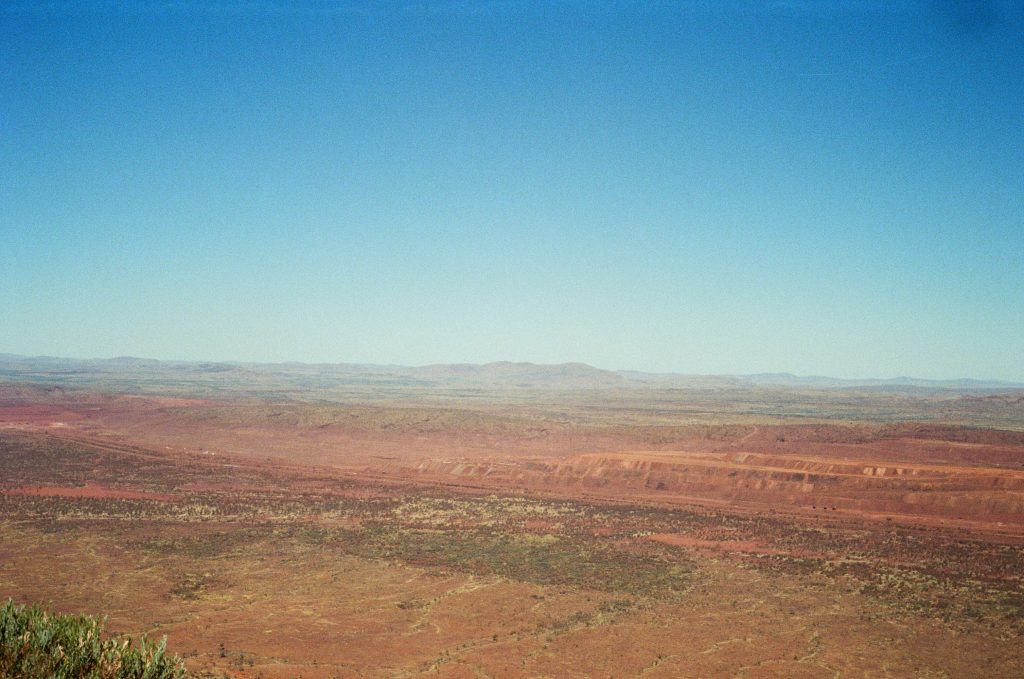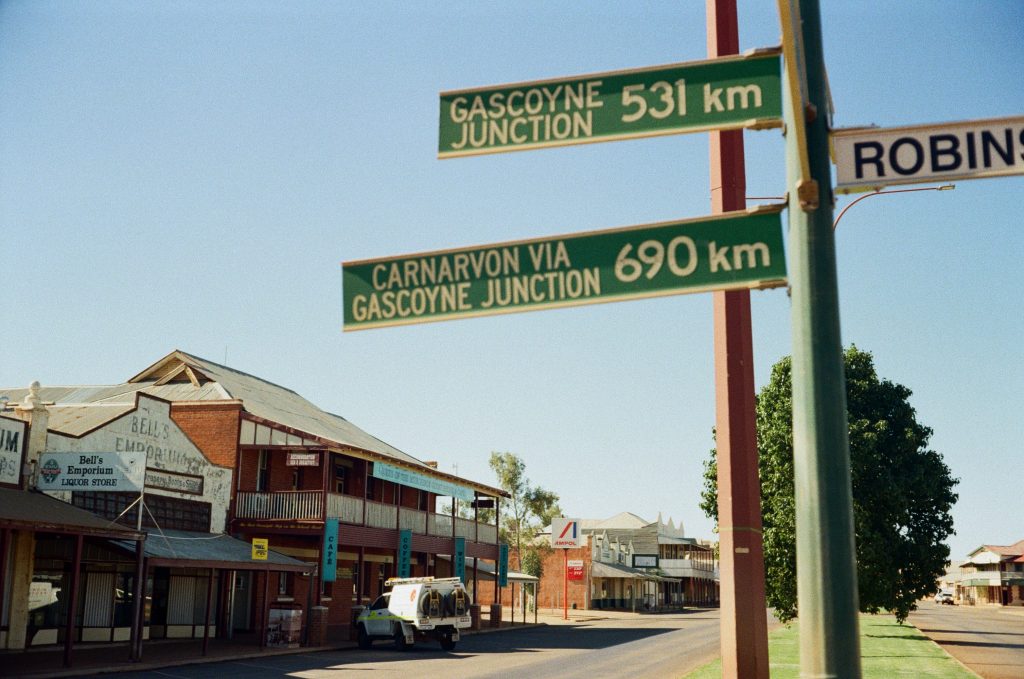A dumbwaiter, traditionally a small freight elevator, also stretches a monumental 1,622KM from Perth to Port Headland in Western Australia. However, it doesn’t ferry food; instead, it carries the mining industry’s pulse, an industry that gives Western Australia its true character. Yet, few often see this character.

Ask the Grey Nomads – older individuals who traverse the country in caravans or motorhomes, often escaping the overcast skies of South Western Australia. They’ll happily recount stories of white beaches, snorkelling in the barrier reefs, and the gorges of Kalbarri and Yardie Creek. If their tires hold up, they might even get as far as Karijini. I heard many of these accounts firsthand when I found myself locked out of my Landcruiser in a carpark full of termite mounds just shy of Exmouth. But for many, this is where the journey ends. After all, of the states 2.76 million inhabitants—11 percent of the nations total, 92 percent live in the south-west corner, with 79 percent residing in the Perth area.
Travel further inland, and a different reality emerges. As tarmac gives way to red dust, signs for tourist destinations are replaced by markers for mines, airstrips, and, if you’re lucky, occasional truck rest stops. These airstrips are bustling – serving the fly-in-fly-out (FIFO) workers who move between urban hubs and remote mines. You can clearly see it when you spot numerous work uniforms at Perth Airport.
A hike up Mt. Bruce in a blister-inducing pair of boots revealed only more of the same from an elevated vantage. The information bulletins you read while ascending reference only the land’s harsh treatment from wildfires and point out the nearest mining reception and airstrip.


To many Australians, this reality might seem obvious. I remember well the response, offered by a Sydney native, when I laid down my plan to travel from Perth along the West Coast up to Exmouth. It was, “Perth? All anyone goes there for is mining.” They had a point, mining has not only been a significant economic driver but has also deeply influenced WA’s politics and identity. During the early 20th century, WA’s vast mineral wealth led many to believe the state would be better off as an independent nation. In 1933, the state even held a secession referendum, where a majority of Western Australians voted in favor of leaving the Australian Federation, driven partly by perceived inequities in economic returns from their vast resources. New resources have come into play over time, with bauxite, iron ore, and uranium still being actively mined today.
Route 95, or as I refer to it, the dumbwaiter, serves these mines. As I traveled down it after a solitary 12 days traveling alone up the west coast, I discovered the authenticity I had failed to find in the several costal areas I previously visited. These roads were vast and open, but not wide enough for the road trains—trucks carrying 4+ wagons transporting freight of all kinds, materials, utility vehicles—you name it. Police escorts and being signaled off the road were not infrequent. Just as a dumbwaiter operates ceaselessly, so did the road trains. If the mines needed it, whether it be new mines opening or the old ones closing, road trains hauled it. Outside, a lifeless environment was laid bare, marked by dead kangaroos and abandoned vehicles, whose occupants I did possess a certain curiosity about.

The heat was inhospitable, and there were no viewpoints worth seeing; even the “come see our boulder in a field” joke you’d find in a Wes Anderson film would have fallen flat here. However, inside the truck cabs, listening on channel 40 on the CB radio, you do find life—a camaraderie built in the absence of all else. The chatter between cabs carried no real significance, but the thick Aussie accents all had a warmth, asking for clearance to overtake and wishing one another a good night. For the first time, I felt I had really seen the true character of Western Australia, sharing an unspoken bond behind the wheel of a tiny pocket of life in an otherwise vast expanse.
Nevertheless, it would be both insincere and tragic to say there was nothing else. As you pass through the sparsely populated towns, many, including Meekatharra with a population of 708, are located in regions with significant Aboriginal heritage, rock art, and sacred sites. You might expect a rich tapestry of Indigenous culture and history. Instead, you find places whose lifecycle was shaped by gold mining. Decayed infrastructure tells tales of past prosperity and present neglect. Australia’s Golden Outback initiative, for instance, has aimed to attract tourists, as has the National Indigenous Music Awards (NAIDOC), which aims to celebrate cultural heritage. The success of these is likely influenced by the ongoing conflicts between the mining industry and the indigenous populations.
Consider the instance of Rio Tinto’s Juukan Gorge disaster in 2020. The company blasted a 46,000-year-old sacred Indigenous site to expand an iron ore mine. The caves held artifacts indicating they had been occupied by humans during the last Ice Age. This incident intensified debates about the rights of Australia’s First Nations peoples over their sacred sites and heritage.
The put this in perspective, In 2019, WA’s mining industry was valued at approximately AUD 145 billion, employing around 120,000 people. Yet, Indigenous employment in this sector is lower than expected, standing at just 6.1%. While there have been industry initiatives to promote Aboriginal employment, the lived experiences often narrate tales of cultural alienation and systemic barriers. The sobering reality was highlighted to me by getting my “First Aussie breath-o” as I passed through a Cue, a town with a population of 178.

My journey, while enlightening, also brought forth the disparities. For every tourist hub, there’s a desolate Meekatharra. Western Australia, like the “dumbwaiter,” carries contradictions. Its pristine coasts and bustling cities contrast the stark realities of its heartland. While tourist brochures may paint a different picture, diving deep unveils stories that aren’t always comfortable but are essential to understanding the true essence of the place.